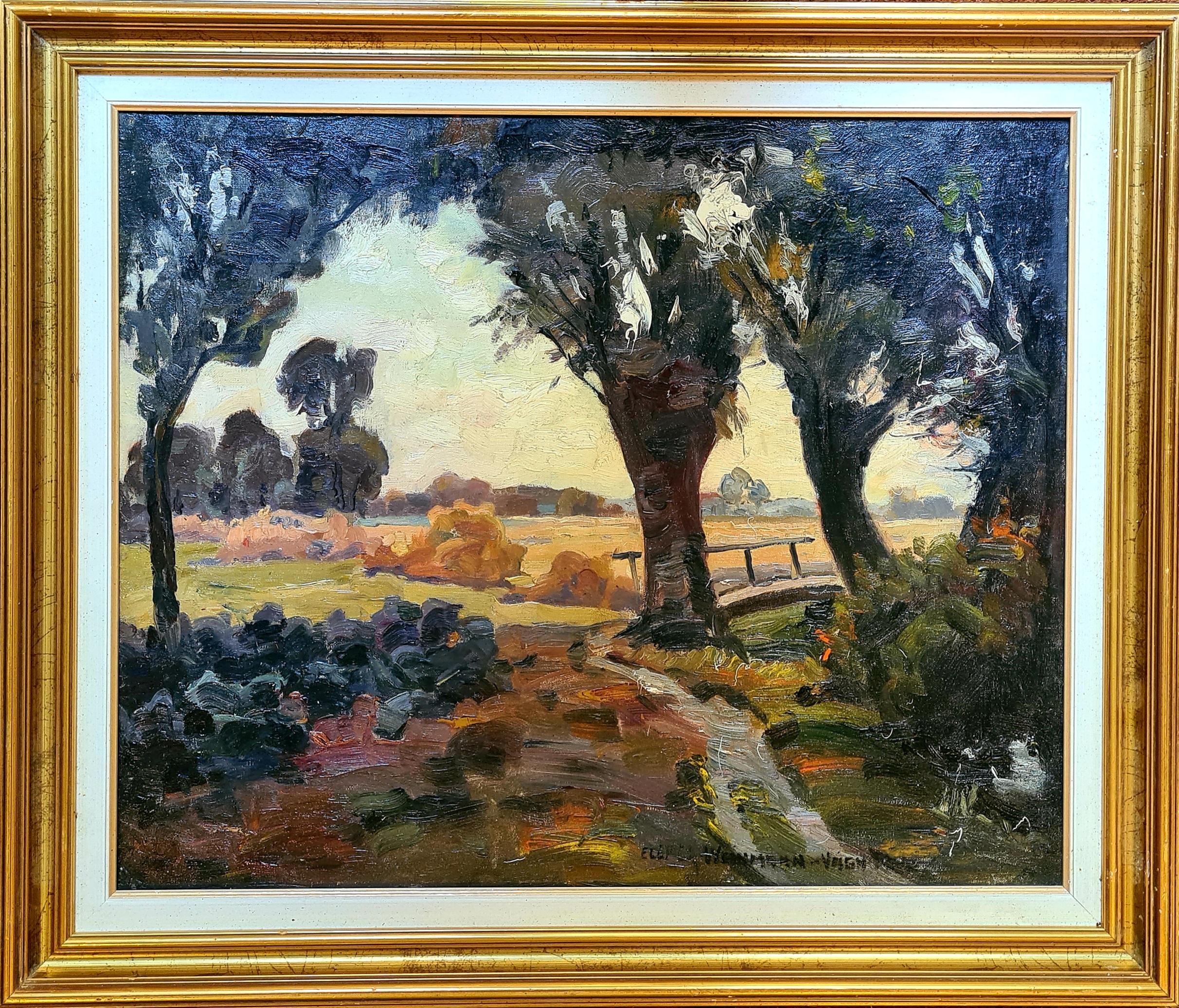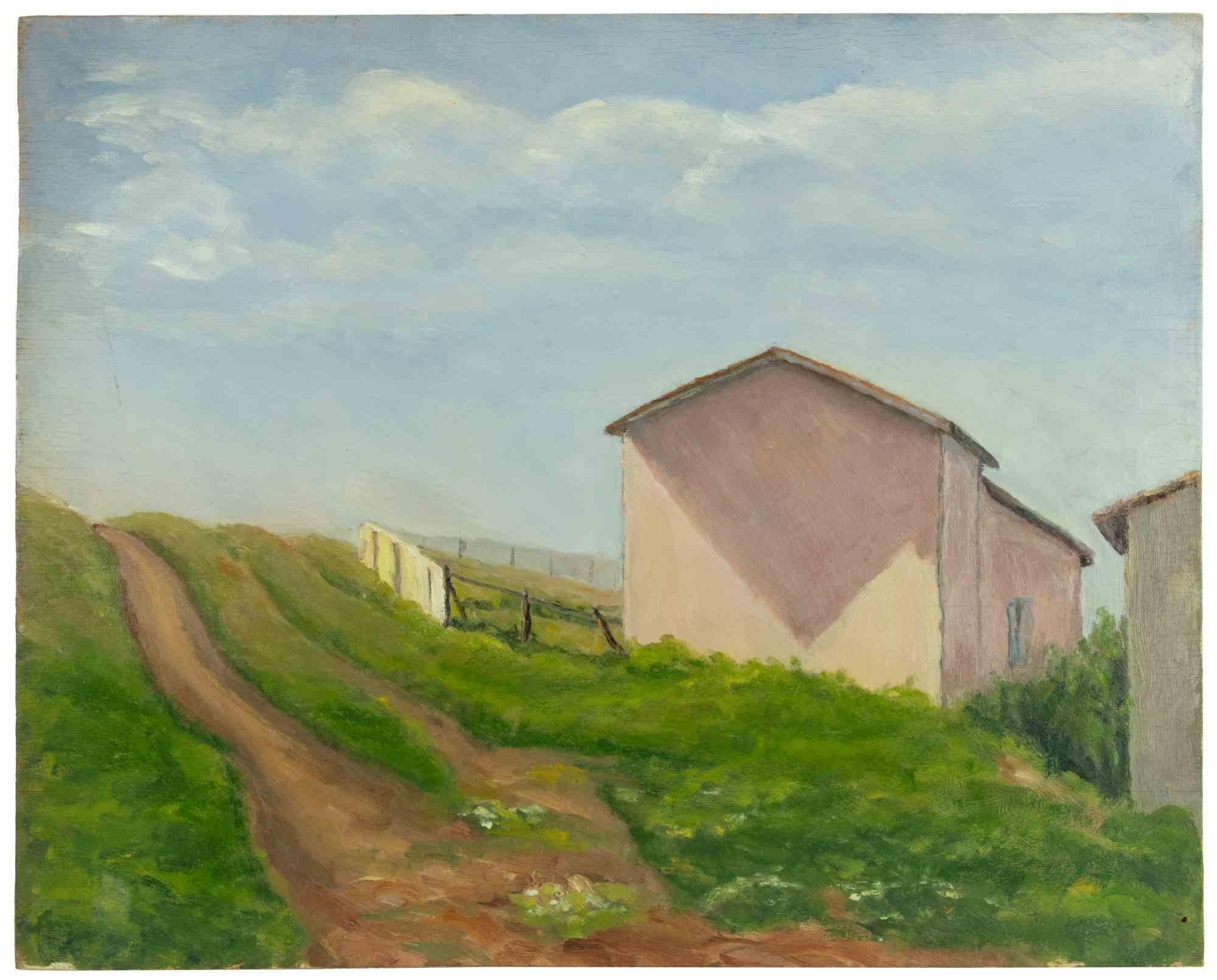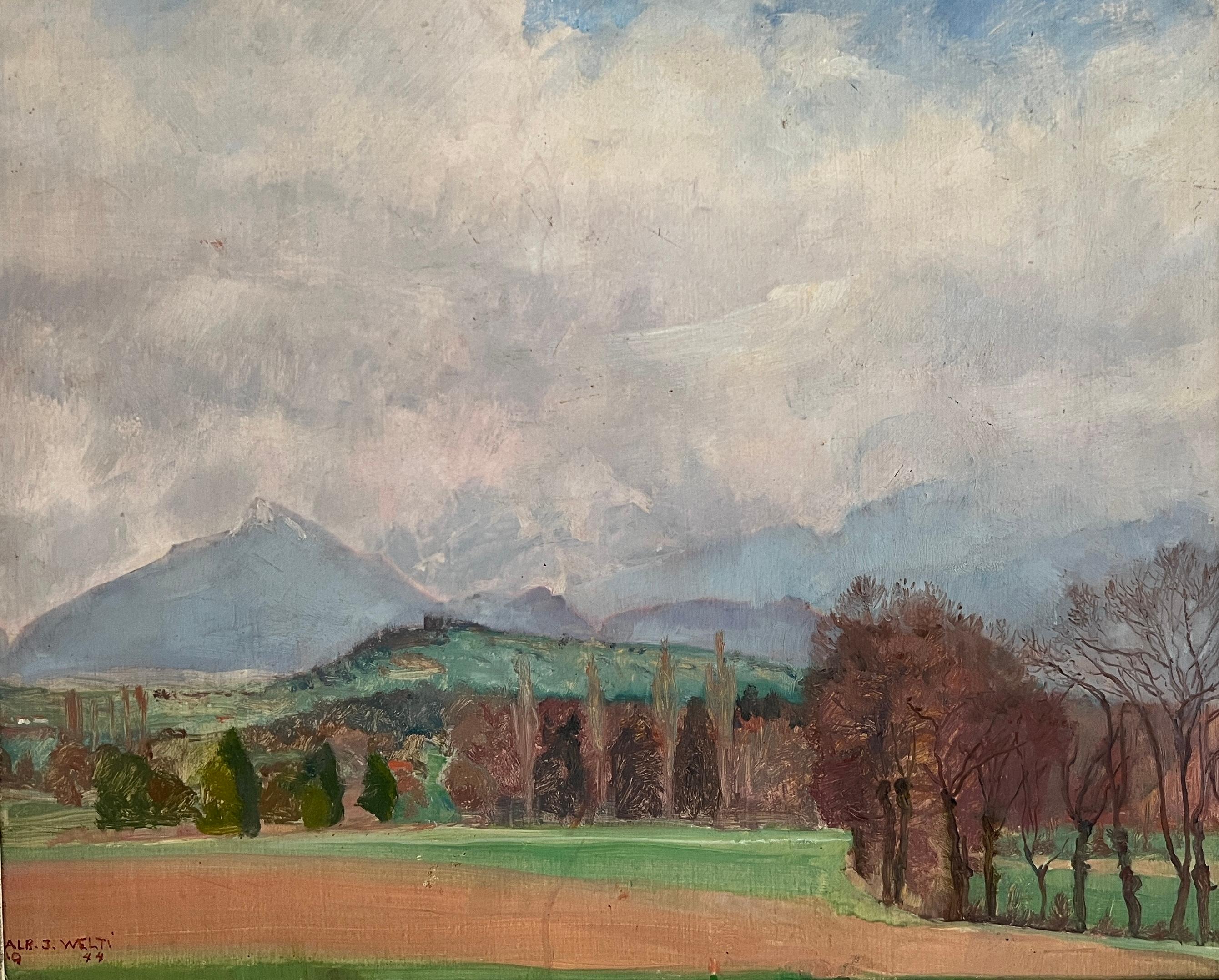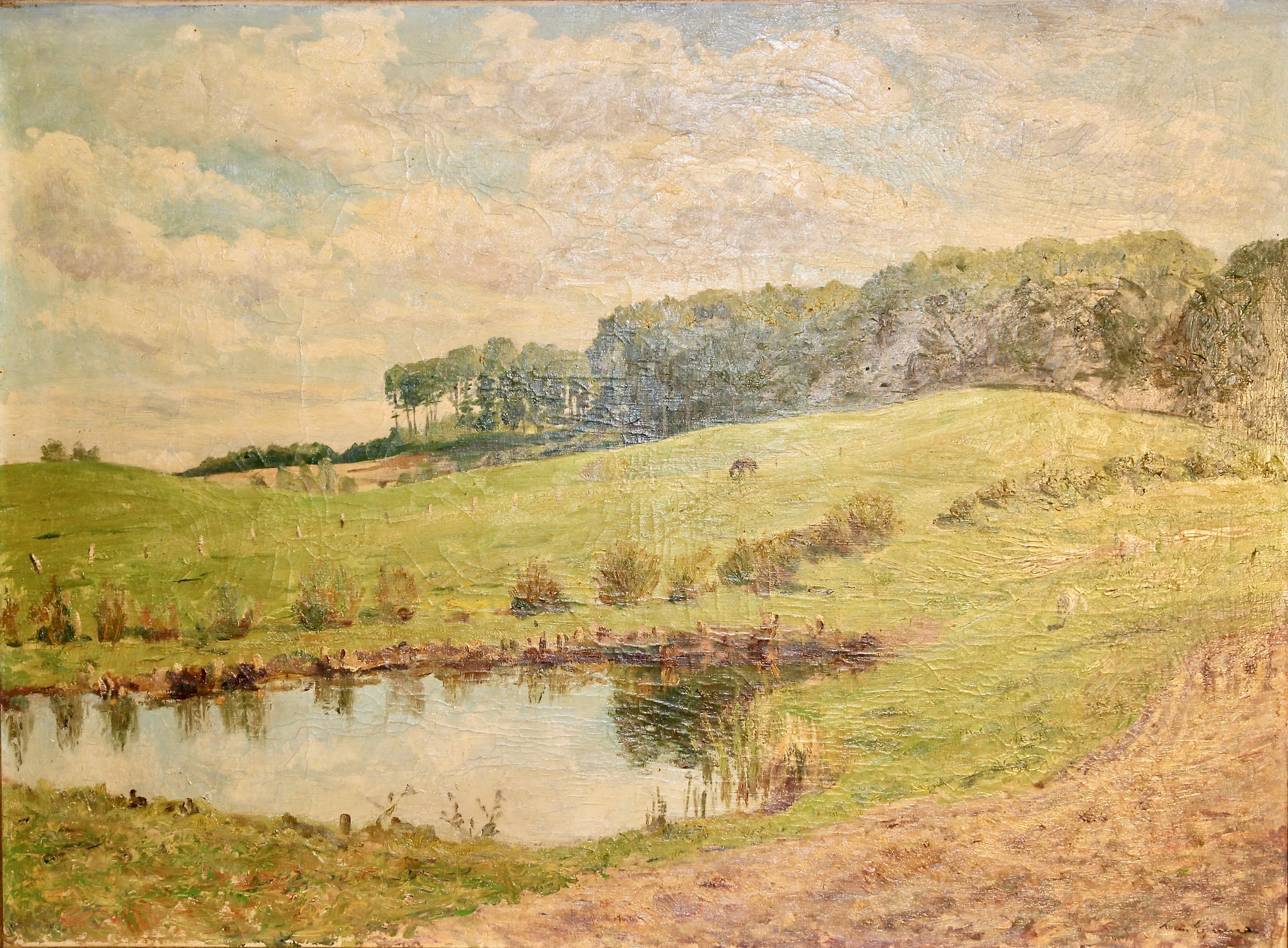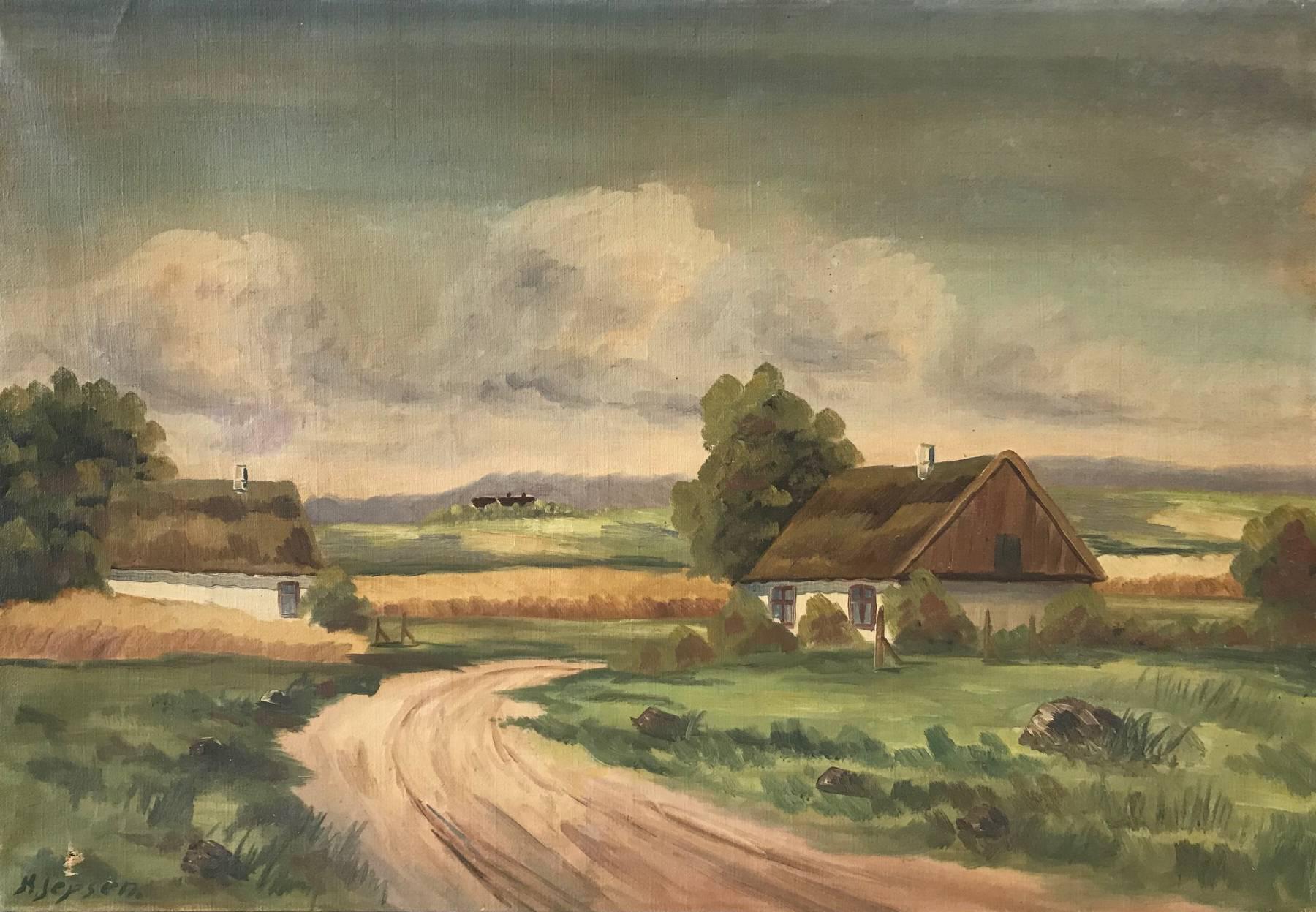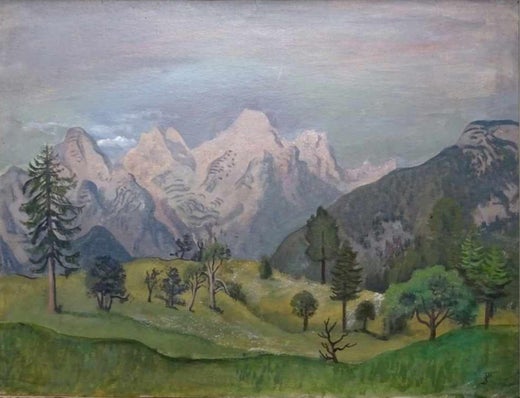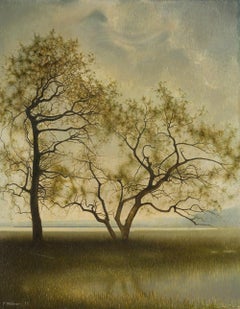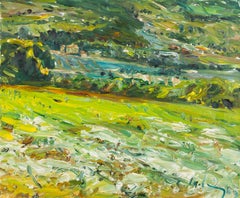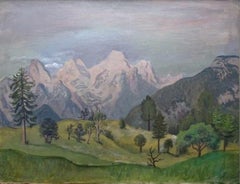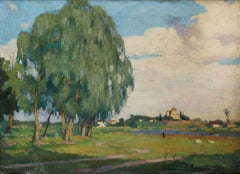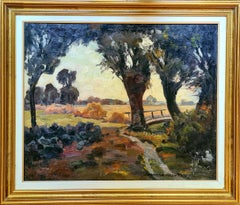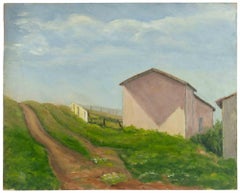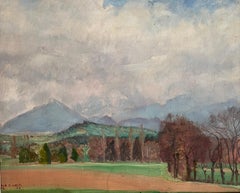Items Similar to Landschaft bei Naunhof
Want more images or videos?
Request additional images or videos from the seller
1 of 5
August Wilhelm DresslerLandschaft bei Naunhof1933
1933
$10,663.48
£7,936.79
€8,900
CA$14,606.30
A$16,245.39
CHF 8,482.84
MX$197,689.15
NOK 108,338.80
SEK 101,602.68
DKK 67,752.59
Shipping
Retrieving quote...The 1stDibs Promise:
Authenticity Guarantee,
Money-Back Guarantee,
24-Hour Cancellation
About the Item
August Dressler is one of the painters of the New Objectivity. He is one of the lesser-known artists of the Weimar era, but he too, like his famous contemporaries Georg Grosz, John Heartfield, and Otto Dix, was committed to social and political issues.
The Berliner-of-choice defied stubbornly the summary classification. Dressler acted truthfully to his origin, temperament and insight as an individual who presents his bond as obligation, who takes his program as template and his slogan as abomination. Only few painters of his generation restrain so inconspicuously from the revolutionary storm and new trends that found its most effective expression in Expressionism of ” the Bridge” group and in the mystical works of the ‘Blue Rider’. Dressler’s self-imposed isolation is based neither on his capriciousness nor is it intentional – it is simply one of the inner necessities of his artistic existence.
One does not do justice to his work, if one tries to interpret only the visible facts, the artistic or the technical qualities in Dressler’s works. This painter lived his destiny with a stubbornly determined consequence of his fate: the pictures are nothing else than the graphic metaphors of the ‘introverted gaze’. He experienced grief and loneliness already during his youth. Dressler learns early about the shadow side of human existence – it becomes the basis of the way he perceived the world. ” I cannot separate myself from what has established me ” – there was a very immediate connection and solidarity between the painter and his personal experiences (l’art pour l’art attitude). Thus Dressler identifies himself with those embodiments of petty-bourgeois narrowness, with those disappointed and abandoned, with those who appreciate simple joys of life and those with quiet hopes.
In his works the figurative language wins through its ability to depict and objectify feelings without words. Dressler does not paint to be modern or original. His way of perception is essential in a solid sense; he focuses on things, elements, and events that reflect a piece of life.
The closeness to the object and the attachment to the figure remain unchanged in Dressler’s oeuvre. One is tempted, looking at his works of five decades, to speak rather than about development but more of unfolding. The thematic inventory is from the beginning artist’s credo and basic motive: the form is added as the answer of the painter. It is Dressler’s personal preference not to correct reality nor to imitate it – his realism brings form and content, sensation and insight to life in a forceless manner.
Dressler feels, thinks and arguments his works on a more general level; his work is not an illustration of social misery or individual depravity. This “realist of the sharper tone” painterly transcends the limitations of genre and folklore; his “petty-bourgeois everyday life” is neither enclosed in the poor man’s pathos nor in the oh-human ecstasy. “Who controls the keyboard of nature”, proclaims Dressler, “can play in their own ways”.
Source: Delp’sche Verlagsbuchhandlung München (Ed.), August Willhelm Dressler, Munich 1970.
- Creator:August Wilhelm Dressler (1886 - 1970, German)
- Creation Year:1933
- Dimensions:Height: 32.49 in (82.5 cm)Width: 25.99 in (66 cm)
- Medium:
- Movement & Style:
- Period:
- Framing:Framing Options Available
- Condition:
- Gallery Location:Wien, AT
- Reference Number:1stDibs: LU1782212787902
August Wilhelm Dressler
Wilhelm August Dressler is one of the painters of the New Objectivity (...) and was committed to social and political issues. The Berliner-of-choice defied stubbornly the summary classification. Dressler acted truthfully to his origin, temperament and insight as an individual who presents his bond as obligation, who takes his program as template and his slogan as abomination. Only few painters of his generation restrain so inconspicuously from the revolutionary storm and new trends that found its most effective expression in Expressionism of ” the Bridge” group and in the mystical works of the ‘Blue Rider’. Dressler’s self-imposed isolation is based neither on his capriciousness nor is it intentional – it is simply one of the inner necessities of his artistic existence. One does not do justice to his work, if one tries to interpret only the visible facts, the artistic or the technical qualities in Dressler’s works. This painter lived his destiny with a stubbornly determined consequence of his fate: the pictures are nothing else than the graphic metaphors of the ‘introverted gaze’. He experienced grief and loneliness already during his youth. Dressler learns early about the shadow side of human existence – it becomes the basis of the way he perceived the world. ” I cannot separate myself from what has established me ” – there was a very immediate connection and solidarity between the painter and his personal experiences (l’art pour l’art attitude). Thus Dressler identifies himself with those embodiments of petty-bourgeois narrowness, with those disappointed and abandoned, with those who appreciate simple joys of life and those with quiet hopes. In his works the figurative language wins through its ability to depict and objectify feelings without words. Dressler does not paint to be modern or original. His way of perception is essential in a solid sense; he focuses on things, elements, and events that reflect a piece of life.
The closeness to the object and the attachment to the figure remain unchanged in Dressler’s oeuvre. One is tempted, looking at his works of five decades, to speak rather than about development but more of unfolding. The thematic inventory is from the beginning artist’s credo and basic motive: the form is added as the answer of the painter. It is Dressler’s personal preference not to correct reality nor to imitate it – his realism brings form and content, sensation and insight to life in a forceless manner.
Dressler feels, thinks and arguments his works on a more general level; his work is not an illustration of social misery or individual depravity. This “realist of the sharper tone” painterly transcends the limitations of genre and folklore; his “petty-bourgeois everyday life” is neither enclosed in the poor man’s pathos nor in the oh-human ecstasy. “Who controls the keyboard of nature”, proclaims Dressler, “can play in their own ways”. Source: Delp’sche Verlagsbuchhandlung München, August Willhelm Dressler, Munich 1970.
About the Seller
5.0
Vetted Professional Seller
Every seller passes strict standards for authenticity and reliability
Established in 1973
1stDibs seller since 2022
13 sales on 1stDibs
- ShippingRetrieving quote...Shipping from: Wien, Austria
- Return Policy
Authenticity Guarantee
In the unlikely event there’s an issue with an item’s authenticity, contact us within 1 year for a full refund. DetailsMoney-Back Guarantee
If your item is not as described, is damaged in transit, or does not arrive, contact us within 7 days for a full refund. Details24-Hour Cancellation
You have a 24-hour grace period in which to reconsider your purchase, with no questions asked.Vetted Professional Sellers
Our world-class sellers must adhere to strict standards for service and quality, maintaining the integrity of our listings.Price-Match Guarantee
If you find that a seller listed the same item for a lower price elsewhere, we’ll match it.Trusted Global Delivery
Our best-in-class carrier network provides specialized shipping options worldwide, including custom delivery.More From This Seller
View AllLandschaft mit Bäumen
Located in Wien, 9
signed and dated lower left
Category
1930s Modern Landscape Paintings
Materials
Canvas, Oil
Bachlandschaft
Located in Wien, 9
In the flyleaf of the catalog published on the occasion of his exhibition in the Gallery Pels-Leusden in Berlin in 1982, there is the following dedication:
“For the very gifted Rolan...
Category
21st Century and Contemporary Modern Landscape Paintings
Materials
Canvas, Oil
Salzburger Berge
By August Wilhelm Dressler
Located in Wien, 9
August Dressler is one of the painters of the New Objectivity. He is one of the lesser-known artists of the Weimar era, but he too, like his famous contemporaries Georg Grosz, John H...
Category
1930s Modern Landscape Drawings and Watercolors
Materials
Paper, Acrylic
Summer Landscape
Located in Wien, 9
Nikolai Iwanowitsch Chrustatschow war ein russischer Maler und Grafiker, der vor allem für seine Landschafts-, Porträt- und Stilllebenmalerei bekannt ist. Er stammte aus einer Künstl...
Category
Early 20th Century Landscape Paintings
Materials
Canvas, Oil
Häuser in einer Landschaft
Located in Wien, 9
In expressionist style, a house surrounded by trees and bushes is shown. The reduction to the essential reinforces the impression of the anonymous village. Henri Schäfer...
Category
20th Century Abstract Expressionist Landscape Paintings
Materials
Canvas, Oil
Vorstadthäuser in baumbestandener Straße
Located in Wien, 9
Als Sohn eines Lehrers wurde Willi Geiger 1878 in Landshut geboren. 1898–99 besuchte er die Münchner Kunstgewerbeschule, anschließend die Technische Hochschule, an der er sein Staats...
Category
1910s Landscape Paintings
Materials
Oil
You May Also Like
Mid Century Expressionist Landscape, Oil on Canvas. The Countryside
Located in Cotignac, FR
Mid Century oil on canvas landscape painting by Franco Hungarian artist Elemer Vagh Weinmann. The painting is signed bottom right and is presented in a custom gilt frame with a white...
Category
Mid-20th Century Expressionist Landscape Paintings
Materials
Canvas, Oil
Summer landscape
Located in Riga, LV
Adolfs Melnars (till 1940 – Adolfs Maslovskis) (1908.4.III – 1963.31.X)
attended studio of K. Miesnieks (1928), studied in Latvia Art academy (1930 – 39) and graduated studio of G. ...
Category
1960s Landscape Paintings
Materials
Oil, Cardboard
Landscape - Painting by Francesco Settimj - 1930s
Located in Roma, IT
Oil on wooden panel realized by Fausta Settimj in the 1930s.
Good condition.
Category
1930s Modern Figurative Paintings
Materials
Oil
Country landscape with mountains and clouds
Located in Genève, GE
Work on cardboard
Dimensions with frame : 46 x 53.5 x 4.5 cm
This work, an impressionist landscape, aptly captures the tranquility and timeless grandeur of nature. In the foreground,...
Category
1940s Impressionist Landscape Paintings
Materials
Oil
Antique Painting by Louis LeJeune. North German Landscape. Oil on canvas.
Located in Berlin, DE
Antique oil painting by Louis LeJeune. North German landscape.
Oil on canvas.
Dimensions without frame.
Including certificate of authenticity.
Louis Ignaz Paul Lejeune (born Februa...
Category
Early 20th Century Landscape Paintings
Materials
Canvas, Oil
$4,313 Sale Price
20% Off
Free Shipping
Untitled: Countryside Landscape
By F.V. Kluwer Jepsen
Located in New York, NY
F.V Kluwer Jepsen (Danish, 1919-2004) "Untitled: Countryside Landscape", Signed Landscape Painting, Oil on Canvas, 26.25 x 38, Mid 20th century
Colors: Green, Brown, White, Grey
Category
Mid-20th Century Impressionist Landscape Paintings
Materials
Canvas, Oil
More Ways To Browse
Weimar Art
Poor Things
Winter Village
Harbor Boat Painting
Italy Boat Painting
Oil Painting Birmingham
Vintage Car Painting
Dutch Impressionist
Ile De France
John Wayne
Paris Scene Large Canvas
19th And 20th Century French Paintings
Antique Murals
Oil Painting Central Park
Russian 20th Century Oil
Wales Landscape Oil
Paintings of Sheep
Chicken Paintings
